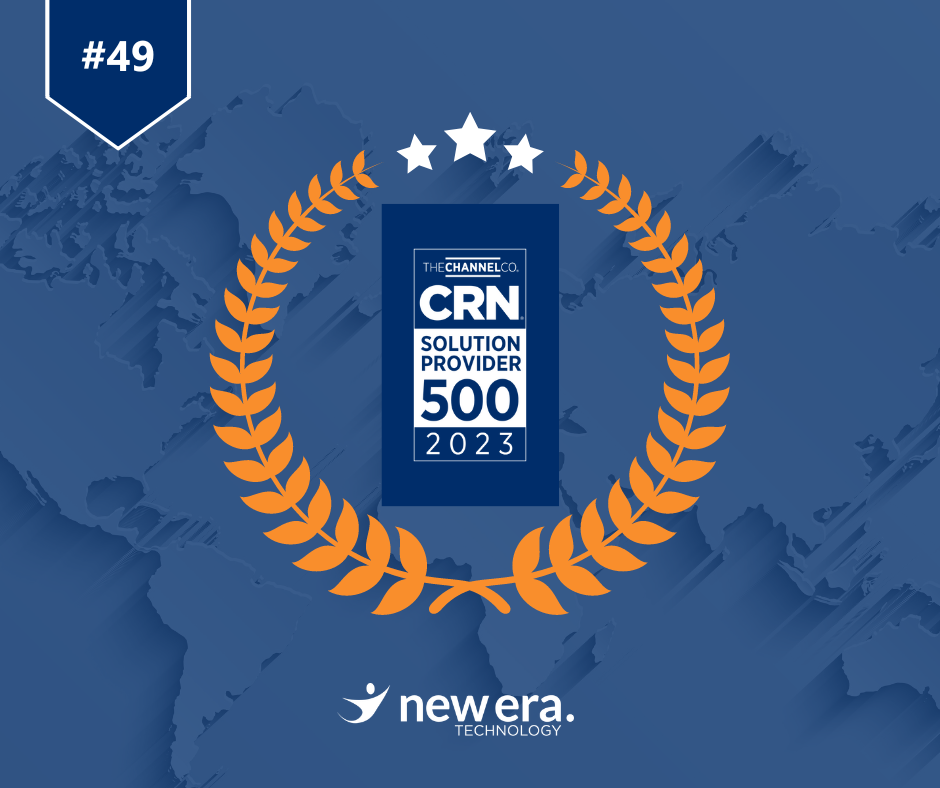Businesses and organizations that want to reduce technology costs and future-proof their tech and data architectures often find transitioning to a cloud infrastructure is the ideal solution. It reduces the expense and resources required to maintain, repair, and replace outdated hardware while improving agility and scalability. However, shifting to an entirely cloud-based infrastructure may be cost-prohibitive or unnecessary, especially when on-premise elements are still fully functional and operational.
A hybrid cloud environment allows businesses to gradually adopt or shift to cloud solutions on an as-needed basis, such as purchasing software-as-a-service or developing a cloud-based application. While a completely cloud-based infrastructure may be the long-term goal, a hybrid solution is often cost-effective, efficient, and effective for most organizations.
The concern is that by dividing elements of your organization between physical or on-premise locations and cloud-based locations, resiliency, or ensuring your system can recover quickly and deliver an acceptable level of service following a failure or disruption, may be more challenging. It’s far from impossible, though. To help you leverage the benefits of a hybrid cloud environment while maintaining IT resiliency, we’re sharing best practices for your organization to adopt.
Setting Resiliency Metrics
Before implementing strategies that help your business achieve a more resilient technology infrastructure, you need to know what resiliency looks like for your organization. To determine this, we recommend knowing two key metrics:
- Recovery point objective (RPO): The maximum amount of data that can be lost after an unplanned incident (security breach, system failure, or other disaster) without significantly impacting your organization.
- Recovery time objective (RTO): The maximum amount of downtime your company can absorb following an unplanned incident without significantly impacting your operations.
By knowing and defining these metrics, you can set goals for the resiliency of your hybrid cloud environment and create a strategy that will help you meet them.
Hybrid Cloud Resiliency Best Practices
Now that you have your benchmarks in place, let’s look at the best practices you can implement to help you meet your goals in the event of a system failure, data breach, or other disaster.
Assess Your Existing Resiliency First, you should assess or audit your current resiliency plans and solutions, and if necessary, adapt them to your cloud-based technology. During this process, we recommend you review your cloud providers’ service level agreements to ensure their RPOs and RTOs align with your organization.
Schedule Continuous Audits Discovering potential problems quickly prevents them from turning into disruptions in your operations, so it’s important to set up a system of continuous audits. Doing this is more difficult in a hybrid cloud environment where third-party cloud-based products and services may not comply with auditing tools. We recommend using third-party monitoring and observability tools that aggregate and visualize data to highlight possible threats and anomalies across hybrid cloud environments.
Have a Backup and Recovery Solution The most important element of a successful hybrid cloud resiliency strategy is a strong backup and recovery solution. This ensures you can easily restore your data and application in the event of a system disruption or failure.
The type of backup and recovery solution you have in place is important, and many experts recommend the “3-2-1 backup rule.” This means having three backups saved to two different storage types, one of which is off site. For example, having snapshots, replication, and deduplication as fail-safes across multiple recovery options allows you to quickly restore your data and applications, minimizing data loss and getting your operations back on track.
Promote a Culture that Owns IT Resilience Your IT team is essential to helping plan your resiliency strategy, implementing solutions, and getting your system back up and running after a crash or disruption. However, your whole team should own IT resilience. This means making sure your team understands and uses security protocols, like keeping their system locked when not in use, taking care not to open spam or suspicious emails, and having strong guidelines in place for using personal devices for work purposes. Additionally, you need to have a protocol in place for your employees to report issues, outages, or security concerns quickly (and train them to use it) to minimize damage, data loss, or downtime.
Is Your Organization Ready to Shift to a Hybrid Cloud Environment?
Operating at the speed of business requires resilience and agility, and we can help you achieve this while building a hybrid cloud environment. At New Era Technology, our team can help you create a cloud strategy as well as build prepare and implement contingency plans that will allow you to respond effectively to threats, disruptions, or system failures. To learn more about how we can help you meet your goals, reach out to us today and let’s talk.
Is Your Organization Ready for the Hybrid Cloud Era?
Staying competitive in the current business environment requires resilience and flexibility. Any organization that wants to remain relevant must be able to adapt and overcome challenges. Therefore, you must have effective resiliency solutions in place. You also need to prepare contingency plans to respond effectively to incidents of unexpected change or disaster. That requires developing a culture that embraces change and continuity. New Era Technology understands the importance of being resilient in the era of the hybrid cloud. Please contact us today to discuss your level of resilience

 Canada
Canada Australia
Australia New Zealand
New Zealand UAE
UAE United Kingdom
United Kingdom




